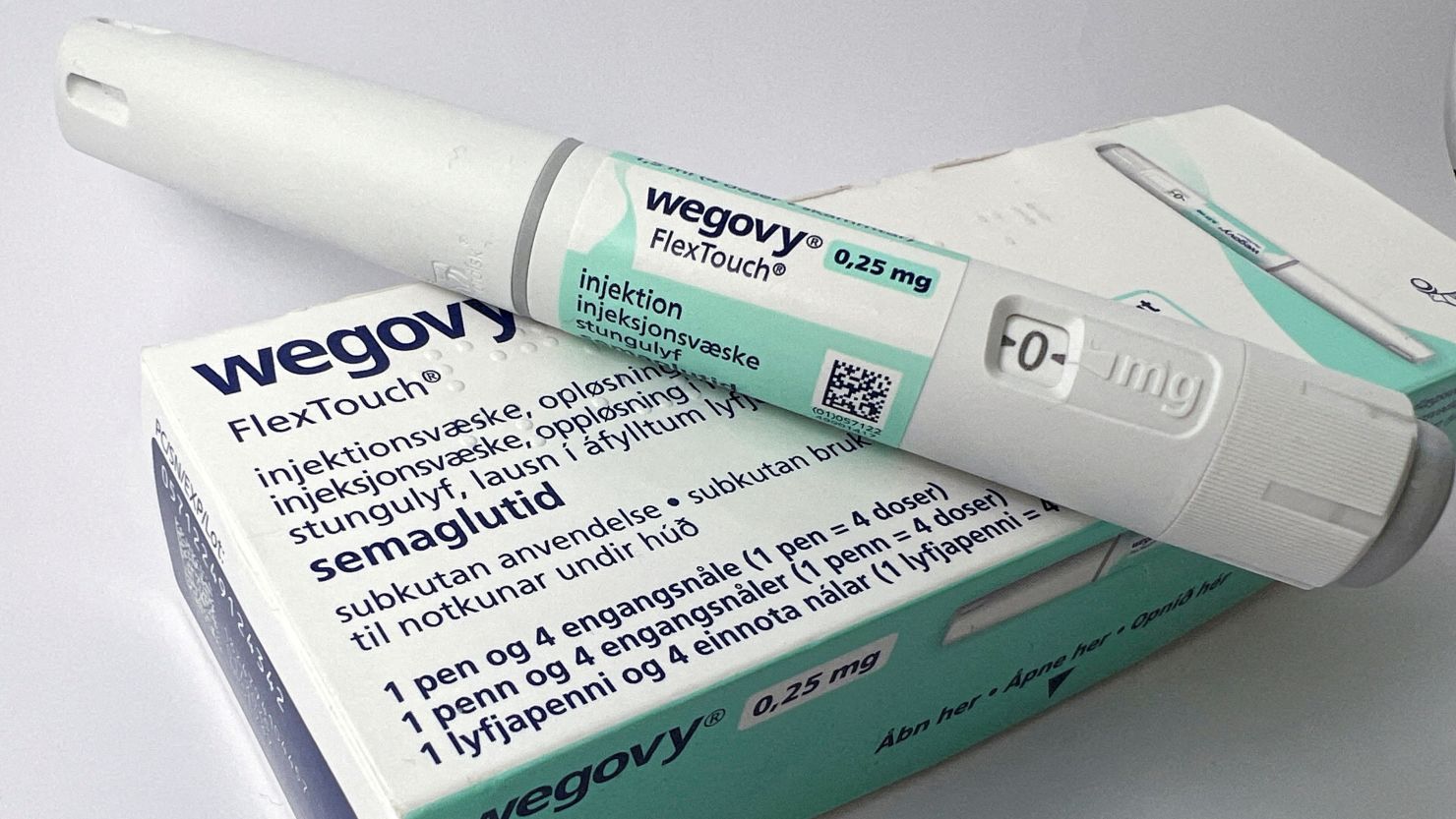Drugmaker Novo Nordisk said it’s been increasing supply of its sought-after weight-loss drug Wegovy, with at least 25,000 people now starting to take the medicine each week in the United States.
That’s more than a capacity crowd at Madison Square Garden, which holds 19,500 people.
It’s about five times more than were able to start the medicine each week in December, the Danish pharmaceutical giant said in an earnings call Thursday.
“There is a very, very significant demand,” Novo Nordisk Chief Executive Officer Lars Fruergaard Jorgensen told CNN Thursday in an interview. “So for the foreseeable future, we believe the demand will outgrow supply. But we are gradually releasing more and more doses to the market.”
The company, which also makes Ozempic for type 2 diabetes, has been limiting how much of the lowest doses of Wegovy it has made available for the past year to avoid having too many new patients start the medicines amid a shortage. The drugs are designed to be started at lower doses that gradually increase over time in order to limit side effects like nausea.
Both Novo Nordisk and Eli Lilly, which makes competitor drugs Mounjaro and Zepbound, have been working to combat shortages of the medicines amid unprecedented demand. The companies have been both buying and building manufacturing plants to try to keep up, but the shortages — as well as difficult insurance coverage for many patients — can make the medicines hard to access.
Jorgensen said Novo Nordisk has one plant in the US and one in Denmark that make the active pharmaceutical ingredient in Wegovy and Ozempic, called semaglutide, and that they’re building two more in Denmark.
The company has also expanded capacity at existing plants that do “fill-finish,” the next steps in the manufacturing process to put the drugs in vials or pens, he said, and acquired three additional sites with a $16.5 billion purchase of drug manufacturing company Catalent.
“We have a massive expansion program,” Jorgensen said. “So we’ll have gradual new capacities coming in line over the coming months and years to keep that journey going and reach many more patients than we serve today.”
Jorgensen called the investments in manufacturing “probably the biggest [capital expenditures] program in the history of pharmaceutical expansion,” comparing the scale of increase to the race to make enough Covid-19 vaccines during the pandemic.
“During the pandemic we had to scale up manufacturing capacity for vaccines, but that was, say, two, three, four doses per person,” Jorgensen said. “Here, we’re talking about weekly injections. We’re talking about, [for] many patients, chronic treatment.”
Eli Lilly, Novo Nordisk’s biggest competitor, also said this week it expects supply to increase later this year.
“The demand for tirzepatide is very strong,” Lilly Chief Financial Officer Anat Ashkenazi said on the company’s quarterly earnings conference call, referring to the active ingredient in Mounjaro and Zepbound.
“Each week, hundreds of thousands of people fill [prescriptions] for Mounjaro and Zepbound, yet we understand the frustration from those facing prescription delays or uncertainties getting their medicine,” Ashkenazi continued. “While we are working tirelessly to ramp supply and expect meaningful increases in shipment volumes in the second half of the year, demand continues to outstrip even increased supply.”
Prescription data shows that Novo Nordisk’s Ozempic is the most widely prescribed drug of the four major ones in the class, known as GLP-1 receptor agonists after the gut hormone they emulate. Lilly’s medicines also mimic a second hormone, called GIP. They all work by reducing appetite, regulating insulin and slowing digestion of food to make people feel full for longer.
There are more than 500,000 total prescriptions for Ozempic each week in the US, according to data cited by financial firm BMO Capital Markets. Lilly’s Mounjaro is the second-most prescribed medicine in the group, with around 300,000 weekly prescriptions. Both of those medicines are approved for type 2 diabetes, but doctors also prescribe them off-label for weight loss.
Ozempic was the first of the four to be approved by the US Food and Drug Administration, in December 2017. Wegovy was approved in June 2021, Mounjaro in May 2022 and Zepbound in November 2023.
Ultimately, the drugs are expected to be much more widely used for weight loss than type 2 diabetes, given how many patients fall into each category. BMO analyst Evan Seigerman, who follows the stocks of both Lilly and Novo Nordisk, said he estimates GLP-1 drugs globally will bring in $74 billion in diabetes in 2030, and $104 billion by then in obesity.
Insurance coverage has been more difficult for drugs approved primarily for weight loss, although both Novo Nordisk and Lilly said this week that was improving in the US.
Get CNN Health's weekly newsletter
Sign up here to get The Results Are In with Dr. Sanjay Gupta every Tuesday from the CNN Health team.
About 50 million Americans currently have insurance coverage for Wegovy, Jorgensen said, and Lilly told investors this week that about 67% of Americans with commercial insurance have coverage for Zepbound. Jorgensen also said Medicaid coverage is improving, noting “a number of states have opted in and see that there’s value in treating patients living with obesity.”
Wegovy was shown in a major clinical trial last year to not only aid with weight loss, but also to prevent heart attacks, strokes and heart-related death in people at elevated cardiovascular risk, potentially increasing demand for the medicine even further, but also improving insurance coverage; the US Centers for Medicare and Medicaid Services subsequently said Medicare plans could cover the medicine for heart benefits.
“We are only getting to, say, a million Americans so far out of the 50 million” whose insurance would cover Wegovy, Jorgensen said. He noted a million is the number of patients who have ever been prescribed Wegovy in the US, and fewer are currently taking the medicine, though he didn’t specify precisely how many. More than 40% of US adults are estimated to have obesity, according to the US Centers for Disease Control and Prevention, or about 100 million people.
“So I think availability of medicines is probably a bigger challenge than, actually, access” through insurance coverage, Jorgensen said.






